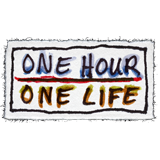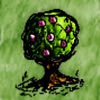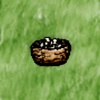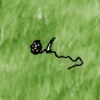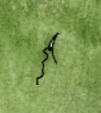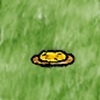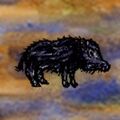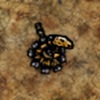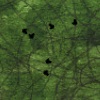| This article includes terminology or recommendations that are popular in the meta game, and is subject to change. |
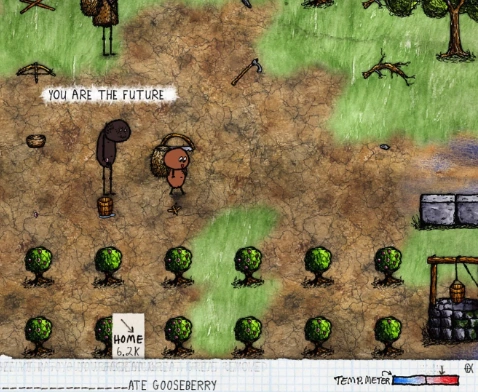
This beginner-friendly guide provides a broad overview of life in an established Town.
For a tutorial on spawning in the wild or earlier villages, see the Eve guide.
Introduction[ | ]
When logging onto One Hour One Life for the first time, a player is most likely to spawn as a child in established Town.
The Official Tutorial does not explicitly teach what a new player should do when playing online. The game's philosophy is that players should utilize trial-and-error and convey their lessons to the next generation. Consequently, the player base is constantly evolving unofficial meta strategies to help prolong the survival of their lineages. As of Version 222 (May 2019), certain meta strategies (e.g. Domestic Sheep Pens) are widespread, commonplace, or even considered basic knowledge by the existing player base.
The objective of this tutorial is to introduce beginners to the prevailing meta game of One Hour One Life in a step-by-step manner.
Overview[ | ]
A Town is a medium-sized settlement that develops from a successful Eve village. It is characterized by existing access to tools, water, farms, domestic sheep, and various workshops. Miscellaneous tools can often be found scattered across the town, making it unnecessary for players to make every basic tool from scratch.
The most pressing issue faced by towns is natural resource exhaustion.
In the current game, towns are predominantly based on a farming economies. Farming is a resource-intensive industry that consumes large quantities of soil and water, and uses iron tools. Within several generations, natural ponds and fertile soil deposits near towns are often depleted. Iron tools break and must be reforged. In order to escape extinction, towns must employ sustainable and renewable strategies for soil, water, and iron.
Composting Industry[ | ]
Composting is the centerpiece to a town economy, as it enables the renewable production of soil for farming. The continuous production of compost is essential for the long-term viability of a town.
Composting is a laborious process that critically depends on the coordination of several other industries:
- Domestic Sheep pen maintenance
- Domestic Gooseberry farming
- Carrot farming
- Wheat farming
- A water source
If a town fails to maintain any of these critical industries, it places itself at risk for a food crisis and extinction. For this reason, learning how to compost is a critical component of the current meta game.
Water Scarcity[ | ]
As of Version 222 (May 2019), water is the bottleneck resource for most advanced settlements. Most industries (including the compost industry) depend on a source of water. The exhaustion of limited local water sources is a pressing problem faced by every large town.
Currently, the only method to delay water scarcity is the rushed development of advanced water technology, particularly the Newcomen Pump and/or Diesel Water Pump. These topics are out of the scope of this beginner's guide, but new players should recognize the importance of water scarcity. The "race" for water technology must occur faster than local water sources are exhausted. If a town depletes its local water sources, it experiences a water crisis and risks extinction.
Beginners can have a positive impact on water scarcity by practicing sustainable habits favored in the current meta game.
Iron Scarcity[ | ]
Iron Ore is a non-renewable finite resource, yet it is critical for the production of tools. Since tools eventually break after many uses, iron must be used to reforge tools. As settlements exhaust nearby iron sources, over time players must travel further away to obtain iron.
In the current meta game, players are encouraged to conserve the usage of iron tools as much as possible
Getting Started[ | ]

Temperature Meter
See also: Starting Guide
When a game is started, new players are randomly spawned into a settlement as a helpless baby. The most common spawn is a settlement at the technology level of a Town. Players can quickly identify towns by observing the presence of all tools and signs of a Domestic Sheep Industry.
Commonly, mothers will carry their babies back to the main fire of the settlement.
Things to do as a baby:
- Say "F" when you need food, approximately when 1-22 boxes remain on the Food Meter.
- Try to keep your Temperature Meter near the middle, so your Food Meter decays more slowly. This usually means staying on or close to the Main Fire.
When the player has developed a full head of hair (~8 total boxes on the Food Meter), they are ready to venture into the rest of town independently.
Childhood[ | ]
During childhood (4-13 years old), players have a small Food Meter that is rapidly depleted. Children move slowly and cannot use knives, yew bows, or hand carts. Childhood is a good time for a player to familiarize themselves with the layout of a settlement and help with farming. Children are recommended to bring a Basket with food if venturing outside of town, but traveling too far away is not recommended for new players.
Food[ | ]
Young children often go to the town's Domestic Gooseberry Farm, which is an efficient food source only for children and the elderly.
Unlike Wild Gooseberry Bushes, Domestic Gooseberry Bushes do not re-spawn berries over time. Domestic Gooseberry bushes must be fertilized and watered in order to regrow all their berries. As a result, taking berries from wild bushes is preferable.
Common efficient foods for children:
Tip: Children can still be breastfed if necessary while they are under age six (<10 total boxes).
Foods to avoid as children:
- Carrots are used in critical industries such as making Compost and raising Domestic Sheep. Never use the last carrots in a settlement as food.
- Eating many cooked foods (e.g. pies, stew) is considered overeating, since these restore more food than children have in their Food Meter.
Gooseberry Farming[ | ]
See detailed guide: How to Maintain the Gooseberry Farm
Young children are encouraged to help maintain the Gooseberry Farm as their first job. This is an easy way to be productive while remaining close to a food source.
The Gooseberry Farm is important for the production of Compost and it is a common food source for children and the elderly. Gooseberry Farming is one of the first topics that most beginners learn.
Carrot Farming[ | ]
See detailed guide: How to Maintain the Carrot Farm
Carrots are critical for the production of Compost, but its method of cultivation is time-sensitive and more complicated than gooseberries farming.
Carrot plots do not regrow after being harvested, and they require continual cycles of re-seeding. Consequently, it is essential that a town always has a supply of Carrot Seeds or Seeding Carrots. The last carrots in a town should never be used for food. It is customary to always leave one FULL plot of carrots to produce seeds.
A fully grown Carrot Row has 5 minutes to be harvested before they turn into Seeding Carrots. Seeding carrots cannot be recovered for food, so allowing too many carrots to go to seed is a waste. If a player sees a fully grown carrot farm, it is customary to help with the harvest immediately.
Sheep Pen Maintenance[ | ]
See detailed guide: How to Maintain the Sheep Pen
The Sheep Pen is one of the most important structures in a town. Domestic Sheep are used for the production of Sheep Dung, Fleece, and Raw Mutton. Consequently, sheep are essential to the Compost Industry and the Tailoring Industry. They are also an abundant source of food.
Important: Never shear the last sheep or mouflon in a pen. Sheared sheep do not produce lambs.
Compost Production[ | ]
See detailed guide: How to Make Compost
Compost production is essential for all farming activities. It is highly recommended that all players learn how to make compost.
Making compost requires a bowl full of gooseberries, a carrot, a sharp stone, straw, a bowl of water, a shovel, and sheep dung.
Tip: If you borrow a shovel from the Sheep Pen, always return it to its original location.
Clothing[ | ]
Temperature extremes and nudity cause a rapid depletion of the Food Meter. A naked character can consume up to 10 times more food than a character at an optimal temperature. As a result, a town of poorly clothed people will rapidly consume its food supply. Assisting in the production of clothes will benefit the settlement in the long-term, as clothes can be handed down to the next generation.
This section describes several easy ways to obtain clothes.
Many textile recipes require some form of Needle and Thread to sew together cloth. In towns, making Needle and Ball of Thread from Fleece is recommended, as it is a renewable resource and used equivalently.
Fleece and Drop Spindle can usually be found on the ground near the Domestic Sheep Pen. If none is available, refer to the Sheep Pen maintenance guide (see below) to learn how to obtain some. Use the Drop Spindle on Fleece to make a Ball of Thread. Finally, combine this with a Bone Needle.
Important: Do not shear the last Domestic Sheep. Shorn Domestic Sheep do not produce lambs.
Important: Do not use Milkweed to make Needle and Thread when a settlement has Domestic Sheep. Milkweed is scarce and precious resource that is better reserved for the construction of other tools and advanced equipment.
Young Adults[ | ]
Food[ | ]
See also: Yum Bonus
As a player ages, young adults should identify additional sources of food in the town.
Eating a chain of different foods builds a Yum Bonus, which is a powerful mechanic that extends the Food Meter each time a new food variety is eaten. Eating "Yum" (new) foods will increase the Yum Bonus Multiplier by +1. Eating "Meh" (old) foods will reset the chain and break the bonus. Experienced players are able to go a long time without needing food by "chaining" the Yum Bonus Multiplier to high values.
Key lesson: all players should develop a habit of eating a variety of unique foods if it is convenient. This reduces a player's overall food consumption.
Gooseberries become an inefficient source of food as players age, since Gooseberry Farms consume a lot of soil and water in exchange for little food value. Beginners often rely too much on Gooseberries as an adult food source, which strains the town economy. A large influx of beginners in a town can easily strip a Gooseberry Farm.
Foods to avoid as young adults:
- Carrots are used in critical industries such as making Compost and raising Domestic Sheep. Never use the last carrots in a settlement as food.
- Gooseberries are inefficient for adults, and is used in critical industries such as making Compost and raising Domestic Sheep.
Food can often be found outside of town in the wild. Some foraged foods require the use of a sharp stone to harvest:
Rabbit Trapping[ | ]
Rabbit Fur is one of the more efficient textiles, and it is commonly used for backpacks and clothing. As a result, there is almost always demand for more rabbit fur.
It is highly recommended for new players to learn about rabbit trapping (see below) early on.
Exploring[ | ]
Adults[ | ]
Food[ | ]
For more a more comprehensive list advanced foods, see: City Guide
A good place for adults to look for food is in the town Bakery or Kitchen. There is usually cooked food lying on the ground or in baskets. Eating cooked food is more efficient for adults and preferred over eating raw food (e.g. carrots, gooseberries, corn). If there is a lack of cooked food near the bakery, players are encouraged to help cook (see below) to prevent a food crisis. Common efficient foods for adults:
Note that Three Sisters Stew requires use of a bowl, and Carved Turkey on Plate requires use of a plate.
Foods to avoid as adults:
- Carrots are used in critical industries such as making Compost and raising Domestic Sheep. Never use the last carrots in a settlement as food.
- Gooseberries are inefficient for adults, and is used in critical industries such as making Compost and raising Domestic Sheep.
Parenting[ | ]
The birth of the next generation is essential to the continued survival of a settlement. If playing as a girl, childbirth is an inevitable part of the game. Do not panic if a baby suddenly appears.
Pick up the baby to feed it. Each time a mother picks up their baby, one hunger box is consumed. If food is scarce, it may be better to continuously carry the baby, since carried babies will remain fed without costing anything to the mother. However, this leaves the mother unable to do anything else.
For beginners, it is recommended to put babies next to the main fire in the settlement. This keeps babies at an optimal temperature, so they consume less food.
Mothers should name their baby by typing: "YOU ARE {FIRSTNAME}"
It is recommended to dress babies with any free available clothes in the settlement. Naked children consume food rapidly and more are prone to dying.
It is common for a mother to babysit for the children from other mothers.
All settlements have a Main Fire that is used as the source to light all other fires. It is typically the location where babies, young children, and child-bearing women are congregated. This area is sometimes insulated with wooden floors and bear rugs to raise the temperature.
The main fire in a settlement should never burn out, as it is important for many jobs and laborious to rekindle from scratch.
The fire should be kept as a Large Slow Fire. If the Large Slow Fire turns into a small Fire, add a piece of Firewood to stoke it.
It is recommended to keep a supply of firewood near to the main fire.
Baking Pies[ | ]
Next Steps[ | ]
Appendix A: Common Information[ | ]
Operating Water Pumps[ | ]
Sustainable Woodcutting and Forestry[ | ]
Trees provide a number of essential resources for every stage of a town, including branches, lumber, firewood, and kindling. Proper conservation of these resources is necessary to ensure a town's long-term viability.
See detailed guide How to manage sustainable woodcutting and forestry
Trees that Produce Useful Resources[ | ]
Tree branches are one of the most essential items in the game. They spawn naturally on various trees, so it is considered a good habit to harvest a branch immediately if you see one growing on a tree, as this prompts the tree to regrow another. A highly useful job during childhood is a branch gatherer.
The following trees produce useful branches and other items, and should generally never be harvested for firewood:
Yew Tree, with Yew Branch
Trees that occur in the Grasslands and Yellow Prairies, including the Maple Tree, Lombardy Poplar Tree, Yew Tree, and Juniper Tree are necessary at all stages of the game and should only be harvested to clear land for building and town organization, never for firewood. Branches from these trees should be harvested as soon as it is convenient in order to reset the respawn timer for a new branch. Straight Branches, from the Maple Tree, should generally never be used for Kindling, as they have the most uses of any of the branches. For kindling, instead use the Small Curved Branch, from the Lombardy Poplar Tree, or the Yew Branch, from the Yew Tree.
Trees that occur in the Jungle, including the Banana Tree, Wild Mango Tree, Rubber Tree, and Oil Palm are necessary for producing Bananas, mangoes, Rubber Dough, and Palm Oil. Generally they occur in such abundance in the jungle that you might often see players harvesting them for firewood, but beginners should avoid doing so.
Harvesting Trees for Firewood and Lumber[ | ]
Whenever you harvest a tree for Firewood or Boards, you use one charge of the Steel Axe and irreversibly remove a tree, producing, in most cases, Firewood, a Butt Log, and a Stump. Before harvesting a tree, first make sure that you have gathered any branches or other useful items. Only chop as many trees as you think is necessary at the time so as not to wear out the axe. The following trees are generally considered the best sources for Firewood and Boards, as they produce few or no useful resources. If your village is in need of either, try to only cut down these trees:
Trees that occur naturally in the Swamps and Desert are best to harvest, as they provide no useful resources. These include the Bald Cypress Tree and the Willow Tree in the swamp, and the Dead Tree in the desert.
White Pine Trees only produce Pine Needles, which are of limited use as of Release 222 (May 2019), so they are also considered acceptable for harvesting.
Growing Trees[ | ]
In more advanced towns, it is common to see a grove of trees that has been planted by another player as a more convenient source of branches or other material. While planting trees is not difficult, it does require coordination among players, as two waterings of the planted tree are required for the tree to reach maturity, so generally this is only practiced by more advanced players.
Dangerous Animals[ | ]
The game includes a number of dangerous wild animals that will wound a player. If left without Medical Treatment, most of these wounds are fatal. You will find the following dangerous animals in their respective biomes:
Wild Boar: Lives in Swamps; Delivers Hog Cut; Fatal without Medical Treatment
Rattle Snake: Lives in Desert; Delivers Snake Bite; Fatal without Medical Treatment
Grizzly Bear: Found in Badlands; Delivers Bite Wound; Fatal without Medical Treatment
Wolf: Lives in Badlands; Delivers Bite Wound; Fatal without Medical Treatment
Mosquito Swarm: Found in Jungle; Delivers Yellow Fever, which is survivable if another player feeds you
